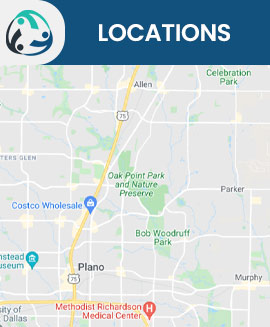Nerve Injury Treatment Specialist in Plano TX
The indications and symptoms of nerve damage vary based on the injured nerve, the type of injury, and the severity of the injury. Symptoms may include numbness, weakness, and pain. Other symptoms of nerve injury include muscle shrinkage, skin color changes, and changes in the amount of sweat produced in specific locations. For more information, contact us or request an appointment online. Our specialist, Dr. Steven L. Remer, MD, is available at American Pain and Wellness to relieve your pain. We are conveniently located at 7920 Preston Road Suite 400 Plano, TX 75093.


Table of Contents:
What are the three types of nerve injuries?
What are the most common nerve injuries?
What are the signs of a nerve injury?
What does severe nerve pain feel like?
Nerve injuries can be divided into 3 categories based on their degree and severity:
• Neuropraxia – Neuropraxia is the mildest type of nerve damage. This condition is characterized by temporary loss of nerve function. Neurapraxia happens when the nerve is compressed or stretched without being torn. Numbness, tingling, and weakness in the affected area are common symptoms of this type of nerve damage. Neurapraxia often lasts a couple of weeks to a few months. The affected nerve can fully recover its function with treatment.
• Axonotmesis – The axon, the long, slender extension of the nerve cell that transmits signals to other cells, is damaged in this more severe type of nerve injury. An injury causing a partial nerve tear or a crush injury can cause axonotmesis. Sensation loss, muscle weakness, and paralysis are some of the symptoms of axonotmesis. The recovery can take several months to a year, and some people may not fully recover their nerve function.
• Neurotmesis – The most severe type of nerve damage is known as neurotmesis. A severe wound, such as a deep cut or puncture wound, can cause neurotmesis. Complete loss of sensation and muscle activity in the affected area is a key sign of the condition. Neurotmesis recovery takes a while, sometimes several years, and some patients may need surgery to repair the injured nerve.
Some of the most common nerve injuries include:
• Carpal tunnel syndrome – The wrist’s median nerve can become compressed or pinched, resulting in carpal tunnel syndrome. This condition often results in hand and wrist pain, numbness, and weakness.
• Sciatica – The sciatic nerve, which runs from the lower back down the back of each leg, can become compressed or irritated, resulting in sciatica. The lower back, buttocks, and legs commonly experience symptoms like pain, numbness, and tingling.
• Spinal cord injury – The spinal cord, which runs from the brain down the back, can become damaged or severed, resulting in a specific type of nerve injury known as a spinal cord injury. Symptoms such as paralysis and loss of sensation are common with spinal cord injuries.
• Radial nerve injury – This kind of nerve injury occurs when the radial nerve, which connects the upper arm to the hand, is damaged or compressed. Common symptoms include numbness and weakness in the hand and wrist.
• Ulnar nerve injury – The ulnar nerve, which runs from the shoulder to the hand, can sustain damage or compression, which results in ulnar nerve injury. Common symptoms include tingling and numbness in the hand and fingers.
The signs of nerve damage include:
• Pain – The sensation of nerve pain is frequently described as burning, tingling, or shooting. The pain may be constant or intermittent.
• Numbness or tingling – The affected area may experience numbness or tingling as a result of a nerve injury.
• Reduced reflexes – Nerve damage can result in a loss of reflexes in the area that was injured.
• Changes in skin temperature or color – Nerve injury can cause changes in skin temperature or color in the affected area.
• Muscle weakness or atrophy – Nerve damage may result in the surrounding muscles becoming weak or wasting away.
• Mobility issues – Nerve damage can make it challenging to move the affected body part.
• Autonomic changes – The autonomic nervous system, which regulates involuntary processes like heart rate and digestion, can be impacted by nerve injury. This may result in symptoms like sweating, lightheadedness, or digestive issues.
Depending on the type and location of the injury, each person may experience nerve pain differently. Severe nerve pain is frequently described as:
• Burning sensation – Nerve pain is commonly compared to a burning sensation that is strong and ongoing.
• Hypersensitivity – Nerve pain often results in heightened sensitivity to pressure, temperature, and touch.
• Tingling – Nerve pain sufferers sometimes experience a tingling or prickling sensation, which is commonly accompanied by numbness or a loss of sensation.
• Shooting pain – Nerve pain can also have a sudden shooting or electric shock-like sensation.
• Aching or throbbing – A persistent throbbing or aching sensation that becomes more intense over time is another common symptom of nerve pain.
Visit American Pain and Wellness for fast pain relief. For more information, contact us or request an appointment online. We are conveniently located at 7920 Preston Road Suite 400 Plano, TX 75093. We serve patients from Plano TX, McKinney TX, Parker TX, Lucas TX, Murphy TX, Richardson TX, and surrounding areas.

Additional Services You May Need

Additional Services You May Need
• BACK AND NECK PAIN
• FACET INJECTIONS
• JOINT INJECTIONS
• PAIN MANAGEMENT
• REGENERATIVE MEDICINE
• PRP INJECTIONS
• HERNIATED DISC
• SPINE PAIN MANAGEMENT
• ARTHRITIS
• MUSCLE PAIN
• RHEUMATOLOGIC PAIN MANAGEMENT
• SACROILIAC JOINT PAIN
• NERVE PAIN
• ABDOMINAL AND PELVIC PAIN
• SPINAL STENOSIS
• SCIATICA TREATMENT
• PHYSICAL REHABILITATION THERAPY
• COMPLEX REGIONAL PAIN SYNDROME
• OSTEOARTHRITIS
• IMMEDIATE RELIEF FOR SCIATICA PAIN
• EPIDURAL STEROID INJECTIONS
• DYSTONIA
• CHRONIC PAIN
• CANCER PAIN
• AUTO ACCIDENT INJURY
• ARACHNOIDITIS




